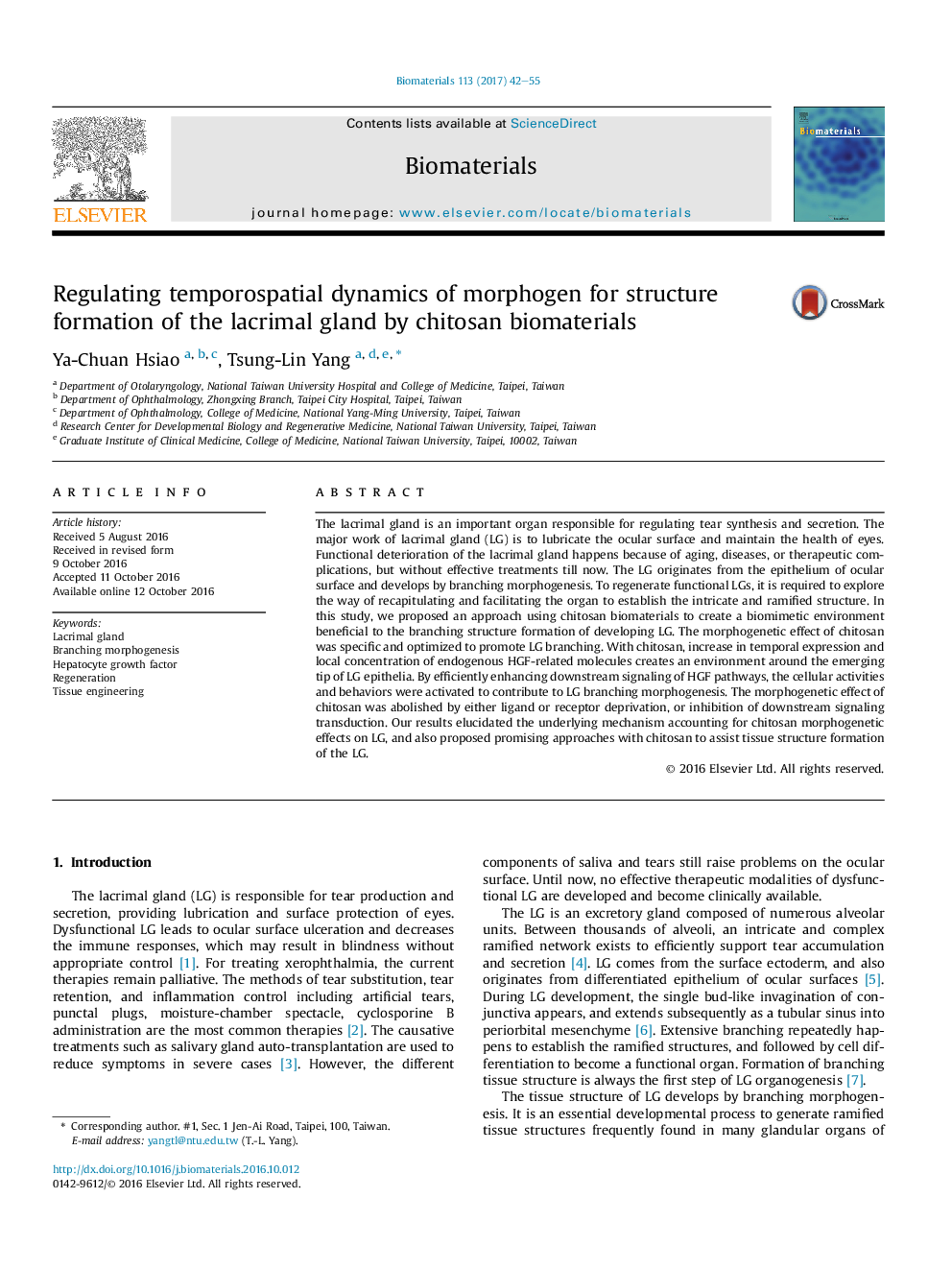| Article ID | Journal | Published Year | Pages | File Type |
|---|---|---|---|---|
| 6451041 | Biomaterials | 2017 | 14 Pages |
The lacrimal gland is an important organ responsible for regulating tear synthesis and secretion. The major work of lacrimal gland (LG) is to lubricate the ocular surface and maintain the health of eyes. Functional deterioration of the lacrimal gland happens because of aging, diseases, or therapeutic complications, but without effective treatments till now. The LG originates from the epithelium of ocular surface and develops by branching morphogenesis. To regenerate functional LGs, it is required to explore the way of recapitulating and facilitating the organ to establish the intricate and ramified structure. In this study, we proposed an approach using chitosan biomaterials to create a biomimetic environment beneficial to the branching structure formation of developing LG. The morphogenetic effect of chitosan was specific and optimized to promote LG branching. With chitosan, increase in temporal expression and local concentration of endogenous HGF-related molecules creates an environment around the emerging tip of LG epithelia. By efficiently enhancing downstream signaling of HGF pathways, the cellular activities and behaviors were activated to contribute to LG branching morphogenesis. The morphogenetic effect of chitosan was abolished by either ligand or receptor deprivation, or inhibition of downstream signaling transduction. Our results elucidated the underlying mechanism accounting for chitosan morphogenetic effects on LG, and also proposed promising approaches with chitosan to assist tissue structure formation of the LG.
